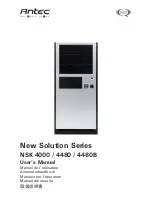
215981
12
Revision A
1.8
Engine Safety
For the safety of yourself and others, understand the hazards associated with the engine before operating the machine, or
before servicing the engine or nearby components.
WARNING
Do NOT use aerosol starting aids such as ether when attempting to start the engine. Use of these substances could
result in an explosion.
CAUTION
•
When starting up a new, serviced, or repaired engine, always be ready to stop the engine to prevent overspeeding.
Do this by shutting off the air and/or fuel supply to the engine.
•
Do NOT bypass or disable automatic shutoff circuits. These circuits help prevent injury and damage to the engine.
For instructions, refer to the technical manual.
•
Inspect the engine for potential hazards.
•
Before starting the engine, ensure that no one is on, underneath, or close to the engine. Ensure that bystanders are
clear of the area.
•
All protective guards and covers must be installed if the engine must be started to perform service procedures.
•
Work around rotating parts carefully.
•
If a warning tag is attached to the engine start switch or controls, do NOT start the engine or move the controls.
Consult whoever attached the warning tag before starting the engine.
•
Start the engine from the operator
’
s station. Follow the procedure in the Starting Engine section of the operator
’
s
manual. Following the correct procedure will help prevent major damage to engine components and prevent
personal injury.
•
To ensure that the jacket water heater (if equipped) and/or lubricant oil heater (if equipped) are working correctly,
check the water temperature gauge and/or oil temperature gauge during heater operation.
•
Engine exhaust contains combustion products, which can be harmful to your health. Always start and operate the
engine in a well-ventilated area. If the engine is started in an enclosed area, vent the exhaust to the outside.
•
Engine exhaust gases become very hot during operation and can burn people and common materials. Stay clear of
the rear of machine and avoid exhaust gases when the engine is running.
NOTE:
If the engine will be operated in very cold conditions, then an additional cold-starting aid may be required.
1.8.1
High-Pressure Rail
Fuel is delivered to the engine under high pressure. Understand the hazards associated with the fuel delivery system before
servicing it.
WARNING
•
Before disconnecting fuel lines or any other components under high pressure between the fuel pump and the high-
pressure common rail fuel system, confirm that the fuel pressure has been relieved.
•
Contact with high-pressure fuel may cause fluid penetration and burn hazards. High-pressure fuel spray presents a
potential fire hazard. Failure to follow these instructions may cause injury or death.
















































